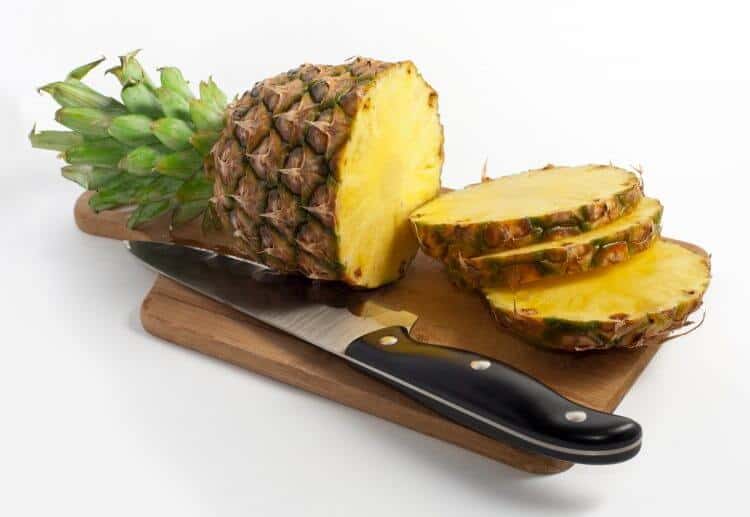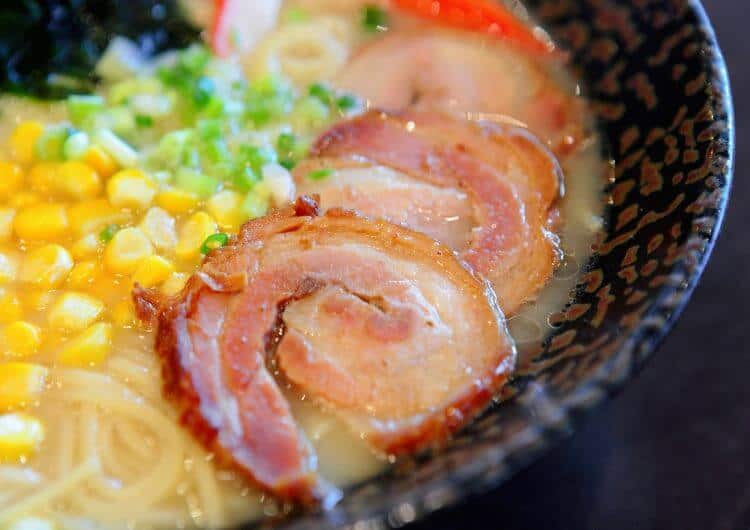Hawaii’s diverse cultural landscape serves as an incubator for regional dishes that you’re unlikely to find anywhere else in the world. You probably assume that many of these are Hawaiian foods.
Lomi Lomi Salmon, a popular side dish made of salt-cured salmon, green onion, diced tomatoes and chopped sweet onion, is the perfect compliment to poi. But, while the Ancient Hawaiians did raise and eat fish, they certainly did not catch salmon. Rather, the cold-water fish was introduced by Russian sailors who taught the Native Hawaiians the technique of rubbing salt into the flesh of the fish to cure it or lomilomi (to rub) the fish as the Hawaiians would say.
So, is lomi lomi salmon Hawaiian in its origin? Strictly speaking, no. But, it does perfectly illustrate how many local dishes came to be: imported recipes were recreated with local ingredients.
Although any of these popular foods can be found on the streets of Honolulu, revealing chapters of the Hawaii’s unique history, very few of those dishes can trace their roots back to ancient Hawaii.
5 Popular Hawaii Foods That Aren’t Actually Hawaiian:
1. SPAM Musubi:

If Hawaii had a state food, it would be the humble, but mighty SPAM musubi.
Nothing hits the spot after a day of ziplining or snorkeling in the sun and surf quite like this iconic snack (nothing else keeps quite as well, either, thanks to the shelf-stable meat).
SPAM musubi is made much like Japanese o-musubi- from a pressed rectangle of short grain rice, a generous slice of SPAM fried with a shoyu-sugar glaze, and held together by a strip of Japanese style seaweed, called nori. You can buy SPAM musubi in grocery stores, convenience marts and high end restaurants.
Or. of course, you can make it yourself with a handy plastic mold designed exactly for that purpose. While SPAM may by affectionately called “Hawaiian steak,” SPAM musubi doesn’t have Hawaiian roots. SPAM was introduced in Hawaii by the U.S. military during World War II and became popular as tensions grew between the US and Japan. Mainlanders may turn up their noses at the notion of the potted meat, but, in Hawaii, the smell of frying SPAM will have your neighbors knocking down your door.
2. Manapua:
Second only to musubi as the most perfectly portable meal, manapua is the quintessential Hawaii street food.
The word “manapua” itself is a contraction with two possible Hawaiian origins: mea ono (pastry) + pua’a (pork) or mauna pua’a (mountain of pork). While the etymology of the manapua is Hawaiian, the savory treat is derivative of the Cantonese char siu bao you might find on a dim sum cart.
In typical Hawaii fashion, the classic char siu filling is often swapped out for other local favorites, like kalua pig, carnitas, chicken curry or Okinawan sweet potato. The bun is either steamed or baked.
Manapua follows the basic carb+meat formula that defines the local food scene despite the fact that the diet of ancient Hawaiians was remarkably healthy. Before Captain James Cook landed in Waimea in 1778, Native Hawaiians thrived on food low in fat and rich with complex carbohydrates, with meat being consumed only on special occasions.
3. Pineapple

Thanks to James D. Dole’s Hawaiian Pineapple Company and his rather aggressive marketing campaign, pineapples will always be synonymous with Hawaii.
Though only .13% of the world’s pineapples are grown in the 50th state, the association with Hawaii is so strong that whenever someone tosses a ring of pineapple onto a dish, it’s immediately labeled “Hawaiian.”
However, the sweet, prickly fruit isn’t indigenous to the islands. It was most likely introduced in the early 1800s and quickly became one of Hawaii’s biggest cash crops. The Big Three pineapple companies, Del Monte Fresh, Maui Land and Pineapple, along with the Dole Hawaiian Pineapple Company, built canneries all over the state and combined to export over 80% of the world’s canned pineapple by the 1960s.
As advances in refrigerated transportation made it easier to ship fresh pineapple, the desire for canned fruit declined. While pineapple is still grown in Hawaii, there are no canneries in operation anymore.
4. Malasadas
It’s almost a beignet, almost a donut, but it’s definitely, utterly divine. This delicious pastry is made from a pillow of dough that is deep fried and dusted with sugar.
A fresh-from-the-fryer malasada is Hawaii’s version of a Hot Now Krispy Kreme donut. Popularized by Leonard Rego, who opened the iconic Leonard’s Bakery on Kapahulu Ave, malasadas come in an array of flavors, like
li hing or guava, to tempt the local palate.
But, their roots reside halfway across the world. Malasadas were introduced to Hawaii by Portuguese immigrants from Madeira and Azores.
In Hawaii, malasadas are fried at fairs, sold as fundraisers and celebrated on Malasada Day (Fat Tuesday), a tradition that dates back to the 1800s when Portuguese laborers on the sugar and pineapple plantations would make malasadas to use up their lard before Lent.
5. Saimin

While a bowl of saimin may look like a glamorous take on Top Ramen, you’d be a fool to dismiss saimin as mere dorm food.
Created in the cultural melting pot of the plantations where Asian laborers cooked familiar dishes with whatever they could find, saimin is the ultimate Hawaii comfort food.
The name, saimin, is Chinese, coming from sai, which means “thin” + min or mein, which means “noodle.” But, the dish itself also draws from Japanese, Filipino and Okinawan elements. Thin, chewy egg noodles are served in rich dashi broth and garnished with green onion, kamaboko (Japanese fish cake), egg, char siu, or whatever your heart desires.
For your first taste of the island favorite, head to the James Beard Award winning Hamura’s Saimin in Kauai. Otherwise, satisfy your craving with a quick bowl from McDonald’s or Zippy’s. Yep, I really did say McDonalds.
So, maybe lomi lomi salmon incorporates non-Hawaiian ingredients and Ancient Hawaiians probably didn’t cool off with a snow-capped shave ice with azuki beans.
These days, even traditional Hawaiian dishes take modern shortcuts. Haupia, a coconut milk pudding with a gelatin like consistency, is thickened with cornstarch instead of arrowroot. Kalua pig is rarely made in an imu, or underground oven, but rather injected with smoke flavor and slow cooked in an oven. Laulau is often made with Japanese butterfish.
Even poi is often reconstituted from a poi powder and is used to flavor everything from pancakes and donuts to ice cream and smoothies.
While the story of most local dishes may not begin in ancient Hawaii, the narrative arc of Hawaii’s regional cuisine tells the familiar tale of outsiders finding a home and cultures melting into one.
Do you know any other Hawaiian foods that aren’t truly Hawaiian? Drop us a comment below.










